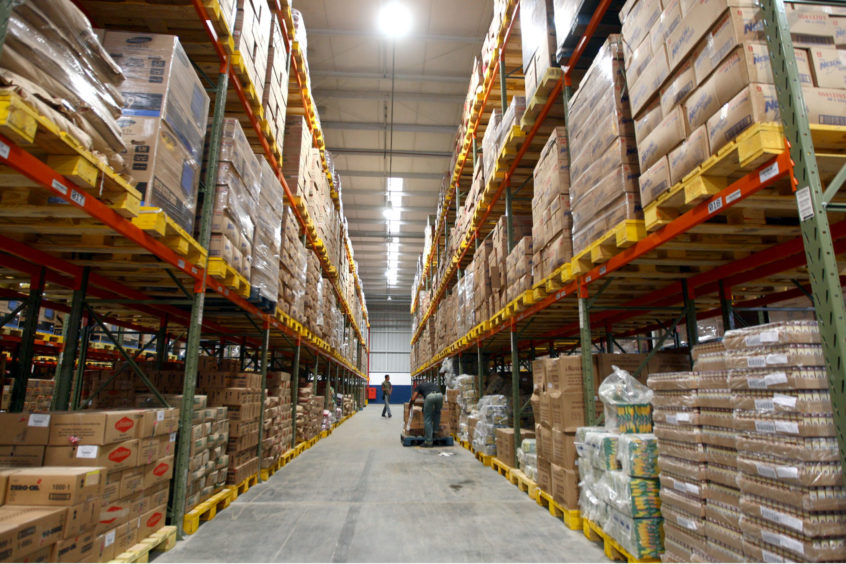CB Richard Ellis (CBRE), a group of experts that analyze the market for a variety of trends, recently released a report detailing the current state of the industrial real-estate market. The record-breaking statistics that they cite point toward a time of balance, even with all of the recent changes in the world economy.
On the other hand, CBRE’s report also details the complex workings of new and used warehouse acquisition in today’s market. Some of the issues they outline could be problematic for shippers looking for new storage space. The problems may also result in increased rent and construction costs.
The effects of online shopping
The popularity of online shopping has grown exponentially in the last few years. People are turning to the internet rather than an actual store for even the largest items. From furniture to groceries, the demand for goods from online retailers is extremely high, which has led to an increased need for warehouse space.
In fact, only 7.2% of industrial real-estate is currently available. This is the lowest rate of availability the market has seen since 2000, according to CBRE economists. As soon as a new warehouse hits the market, it is snatched up by companies looking for more storage space.
This increased demand has also changed the look of industrial real-estate. Many storefronts are adopting a hybrid method, where they maintain a physical location while also selling products online. Other facilities are changing the way they store and transport goods.
For example, some warehouses are being turned into cross-docking facilities to expand the capabilities of a simple storage area. Now, it can also handle short delivery trips for larger items. All in all, the entire industrial storage market is changing. There is increased demand for space, as well as a shift in how and for what the spaces are being used for.
Record-breaking stats
CBRE’s report comes with some surprising statistics about this situation. A few of these numbers could be important to shippers, especially those looking to build or obtain new warehouse storage facilities.
- Increased land costs are driving up the price of new construction and rent. CBRE economists found that this one component can account for more than half of all construction expenses.
- The availability of industrial real estate has now fallen for a consecutive 32 quarters. This is the most consistent decline the industry has seen since CBRE began tracking it in 1988.
- The report also found that many current vacant properties are outdated. These properties are not equipped to meet the current demand and standards of modern storage.
○ 1 billion square feet of warehouse space is over 50 years old. This means these spaces likely have a clearance height that is less than 20 feet. In the end, a buyer or renter would have to renovate the space to make it adequate.
○ The newest warehouses are popping up in unique locations across the country. Those that remain in common industrial areas, such as New Jersey, are well over 50 years old. On the other hand, places like Nashville and Atlanta see newer storage spaces that are under 30 years old.
Expert opinions
Tim Savage, senior managing economist for CBRE, had this to say about the current shift in the definition of industrial space: “You’re seeing a broad shift in the blurring of the line between retail and industrial space. So something that may appear as a complete retail space does have an industrial component to it.”
He also claims that the market is actually “remarkably balanced.” All of this in spite of the decreased availability of industrial real-estate. Savage asserts that because construction companies can keep up with new demand, the balance of the market remains intact. Although there is little space available, those who need space can get it, which has led to a market where the suppliers are providing the right amount of product for the demand.
What this means for shippers
For those in the shipping industry, this shift in industrial availability means two things. The first is that obtaining and utilizing warehouse space is becoming more difficult, which can cut into profits. Shippers may end up paying more for space because of the increased demand.
A second issue that arises from the change primarily affects the trucking industry. Since websites want their products closer to the customer, this means they are storing products closer to cities and suburbs. That also means dealing with residents who do not appreciate the increase in emissions, traffic and noise coming from trucks.
The good news is that these effects are not slated to last long and the slowly developing trade war could drastically shift the scenario in which we are today. For now it is all a game of wait and see.






One Comment on ““How Decreased Warehouse Supply Could Affect Shippers””
If there is less supply in the warehouses it is quite obvious that the work of the shippers will be affected as there will be no consignments that will have to be reached on the required destination which will cut the cost and there will be less workflow.